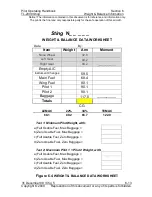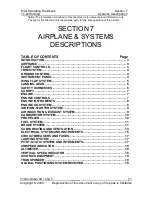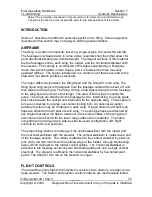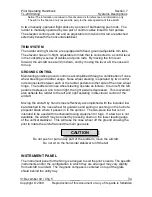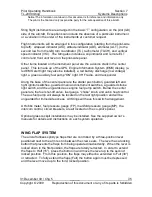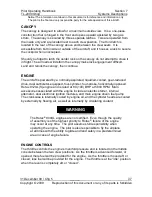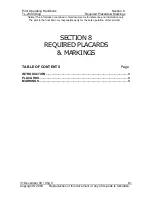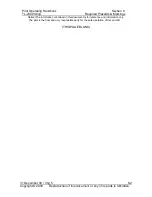
Pilot Operating Handbook
Section 7
TL-2000
Sting
Systems Descriptions
Notice! The information contained in this document is for reference and information only.
The pilot is the final and only responsible party for the safe operation of this aircraft.
31 December 09 / Chg 5
______
7-12
Copyright © 2009 Reproduction of this document or any of its parts is forbidden.
tank to
the top of the filler neck may cause fuel to
be vented overboard
due to liquid expansion. For this
reason, fill the main tank to only 20.5 gallons. Similarly,
the wing tanks have a capacity of 6.1 gallons but should
only be filled with 6.0 gallons.
Do not fill the wing tanks for fuel storage. Fill the wing
tanks to use only when you need additional fuel for a
long trip.
If fully fueled, the aircraft may vent fuel by siphoning
through the main tank vent system
due to fuel
temperature expansion
. To break the siphon, open
the main tank cap lock lever (don’t remove the cap) and
raise the nose by pushing down on the tail area ahead
of the vertical fin. Do not sit on the horizontal tail
surfaces.
If the siphon is not broken, the entire fuel contents of
the wing tanks and a portion of the main tank will vent
from the forward area (at the firewall) on the ground
and create a fire hazard.
If fully fueled, the wing tanks will vent and siphon if the
aircraft is parked in the sun
due to fuel temperature
expansion. The siphon will continue from the wing tank
tip vent until the fuel vent entrance inside the tank is
exposed. Approximately two gallons may vent to the
ground or in the hangar.
If fully fueled, the wing tanks will vent and siphon if the
aircraft is parked across a slope
allowing one wing to
be low. The siphon will continue from the low wing tip
vent until the contents of both wing tanks are low
enough to expose the low wing vent entrance in the low
wing tank. Approximately 8 gallons may vent to the
ground or in the hangar.
CAUTION
CAUTION


